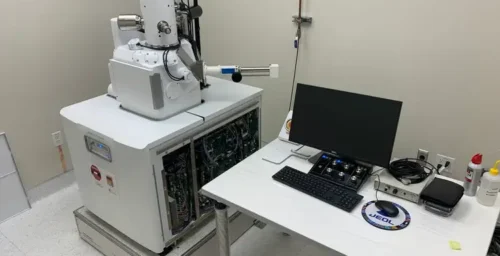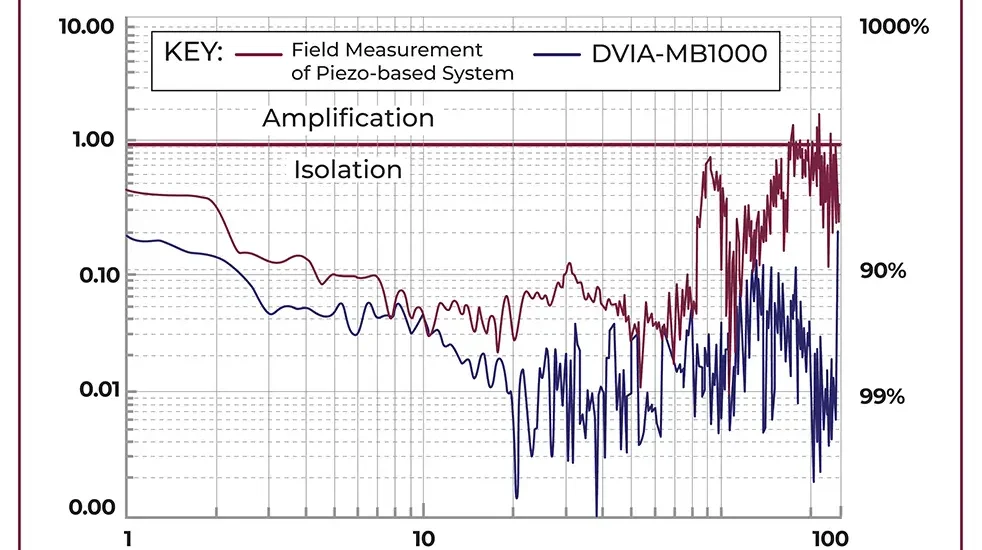
DVIA-M vs Piezoelectric Vibration Isolation Systems. Which is King?
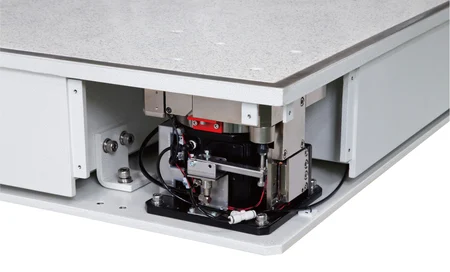
The Daeil DVIA-M series vibration isolations system is the premier active vibration isolation system with excellent broadband vibration isolation and superior performance at low frequencies. With dynamic feedback and feedforward controls and best-in-class components and design, the DVIA-M series outperforms other available systems, including systems with non-traditional system architectures with alternative actuators.
System Design
The primary components of the system are:
- Electromagnet driven actuators located at the four corners of the isolated mass
- Eleven velocity sensors with excellent low-frequency response starting at 0.3 Hz
- Advanced feedback and feedforward controls that both actively cancel vibration on the isolated mass and detect and cancel ground vibration before it reaches the isolated mass
- Pneumatic isolators that are highly adjustable based on the mass of the payload and facilitate better low-frequency performance from the actuators
The result is a stable, reliable system that provides active vibration isolation starting at 0.5 Hz and 90% vibration reduction starting at 2 Hz.
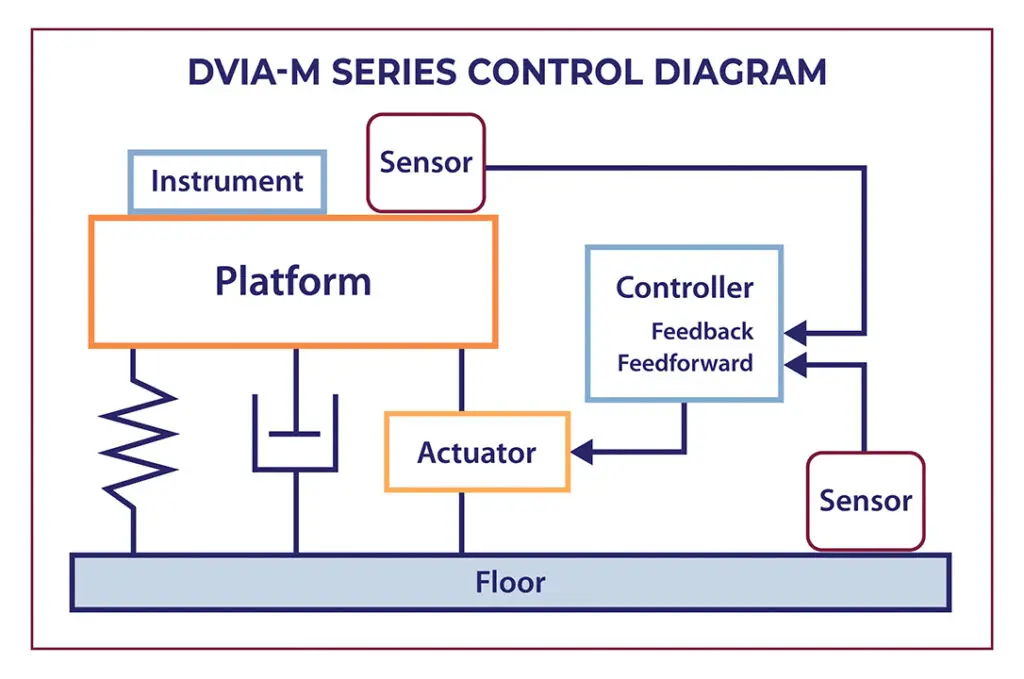
Feedback Controls
The feedback control system constantly measures the isolated mass vibration and utilizes electromagnetic actuators to create an equal and opposite force to attenuate vibration on the isolated mass. Although the system works well out of the box, tuning the feedback control loops allows VEC and Daeil to optimize system performance by adjusting the gains based on the isolated mass and using advanced notch filters for accounting for any onboard resonances or vibration sources.
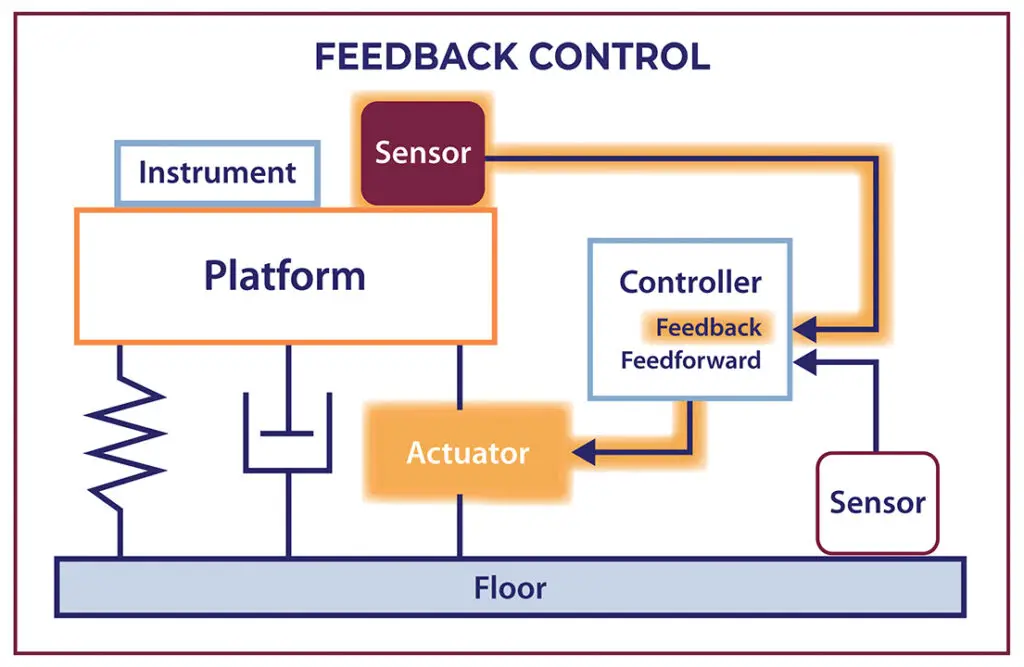
Feedforward Controls
The feedforward control for the DVIA-M series is also dynamic. It uses real-time ground sensor measurements to detect vibration and sends a signal to the actuators to cancel the vibration before it reaches the isolated mass. With dynamic control, the feedforward control easily adapts to the changing vibration level in your facility and does not require constant re-tuning to deliver outstanding performance.
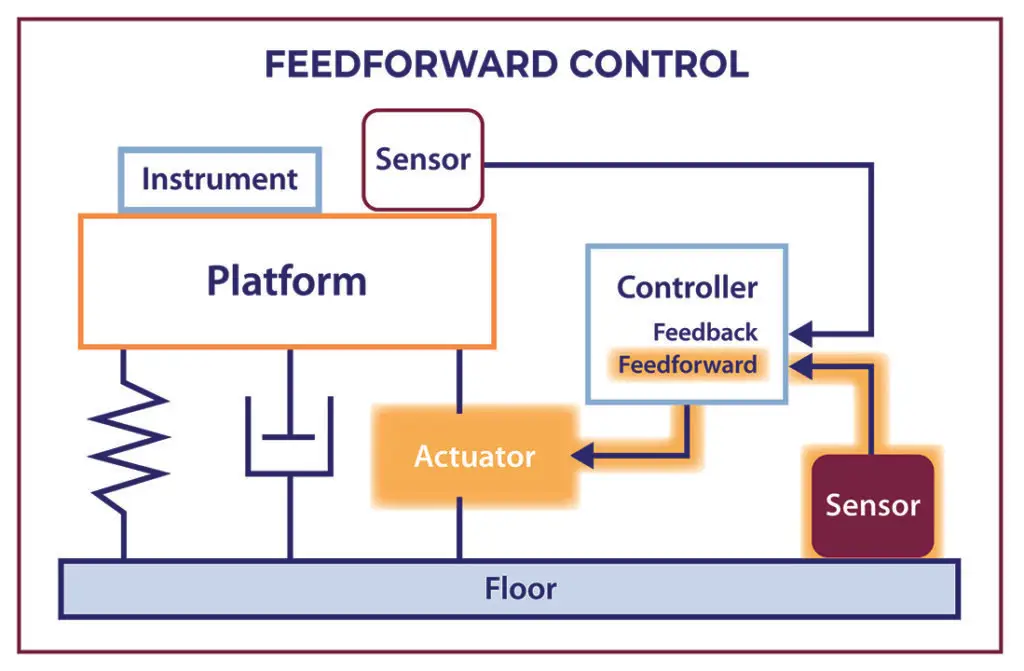
Misconceptions about Feedback and Feedforward Controls
Literature published by competitors perpetrates several misconceptions about feedback and feedforward controls that may be true for other vibration isolation systems but are simply wrong for the DVIA-M series.
Misconception #1: Feedback systems cannot track information from two sensors simultaneously at low frequencies.
The claim is not true because the ground and payload sensors are independent sensors supporting two separate control systems – the feedback and the feedforward controls. The payload sensor provides input to the feedback control loop, while the ground sensor provides input to the feedforward control loop. The gains of the feedback and feedforward control loop are independent, so detuning of either sensor is not required, and the low-frequency performance of both sensors is unimpaired.
Misconception #2: Feedback sensing of the isolated mass results in all payload resonances fed into the control loop.
Daeil designed the DVIA-M series isolation system for high-end electron microscopy and imaging applications where dramatic stage movements are not present. VEC and Daeil offer the DVIA-P series isolation table specifically designed to minimize the impact of stage movements.
Misconception #3: Feedforward input is a preprogrammed input signal and has no impact on reducing low-frequency floor vibration.
The feedforward input for the DVIA-M series isolation system is dynamic and dramatically improves low-frequency vibration isolation performance. Instead of a preprogrammed input signal, the feedforward controller uses a real-time signal from the ground sensor to counteract the vibration before it disturbs the isolated mass. The result is improved low-frequency isolation performance that adapts to the changing vibration levels in a facility.
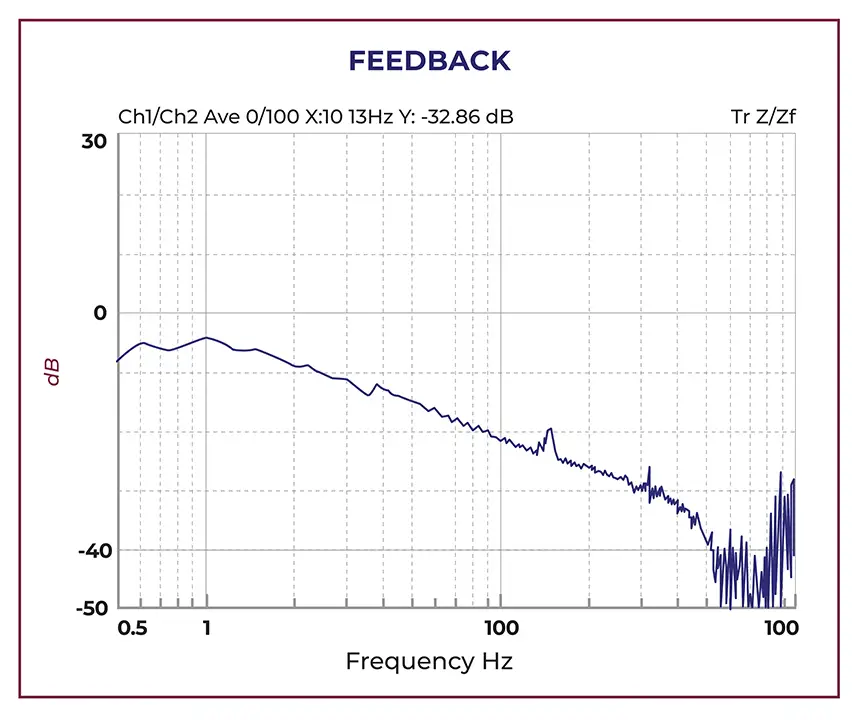
Typical performance of the DVIA-MB 1000 with only Feedback control
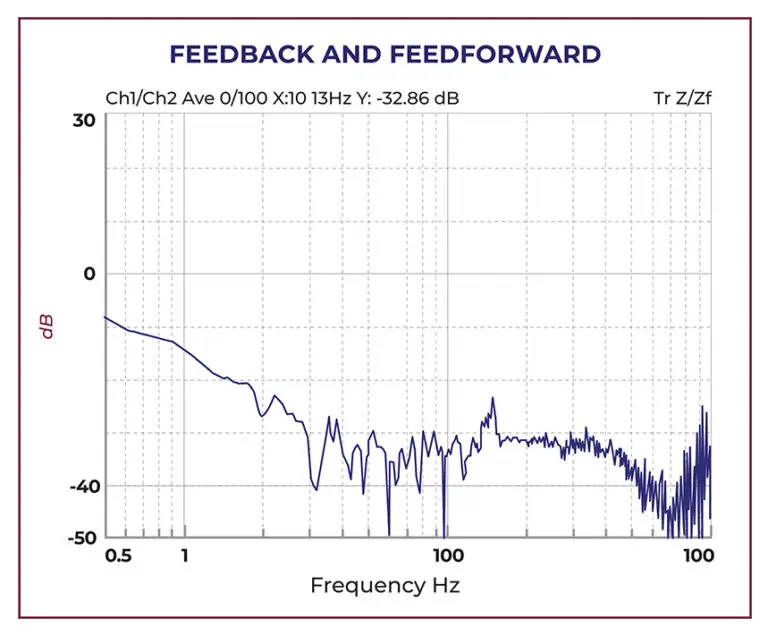
Typical performance of the DVIA-MB 1000 with both Feedback and Feedforward control
DVIA-M Series Advantages over Alternative Isolation System Designs
The stiffness of piezo-based systems works well for moving equipment, but it has limitations for electron microscopes and imaging applications.
The first limitation is that the passive component of the piezo-based system is typically an elastomer, which is very stiff and has a high resonant frequency ~20 Hz. Therefore, the piezo-based system must use active control gains to minimize the higher frequency vibrations and a very stiff overall system. The result is a degradation in performance at frequencies beyond ~50 Hz.
The second limitation is that the piezo-based system uses only a feedback control loop and does not benefit from a feedforward control element, so low-frequency performance is also limited compared to the DVIA-M series.
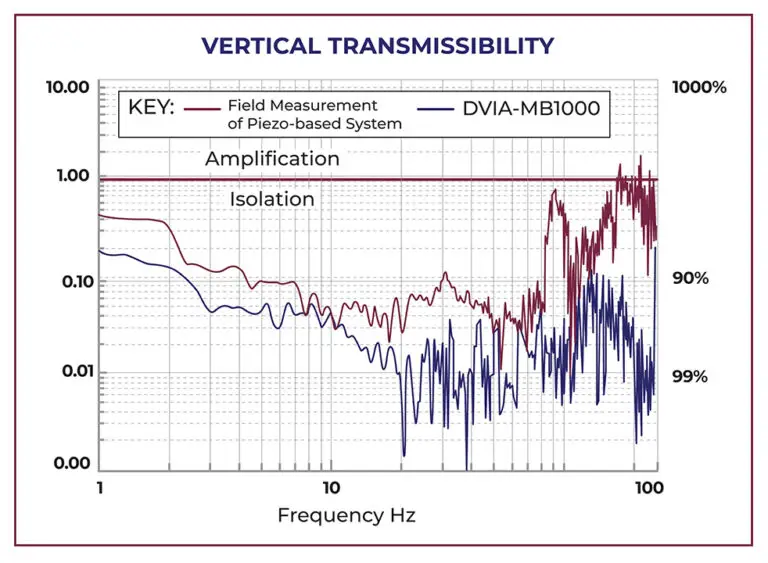
Vertical field measurements of DVIA-MB1000 compared to a Piezo-based isolation system used in electron microscopy applications. The DVIA-MB1000 also has similar benefits in the horizontal directions.
Conclusion
In summary, the design and controls of the DVIA-M series vibration isolation system result in superior performance compared to other options on the market.
Using feedforward control dramatically improves low-frequency performance.
